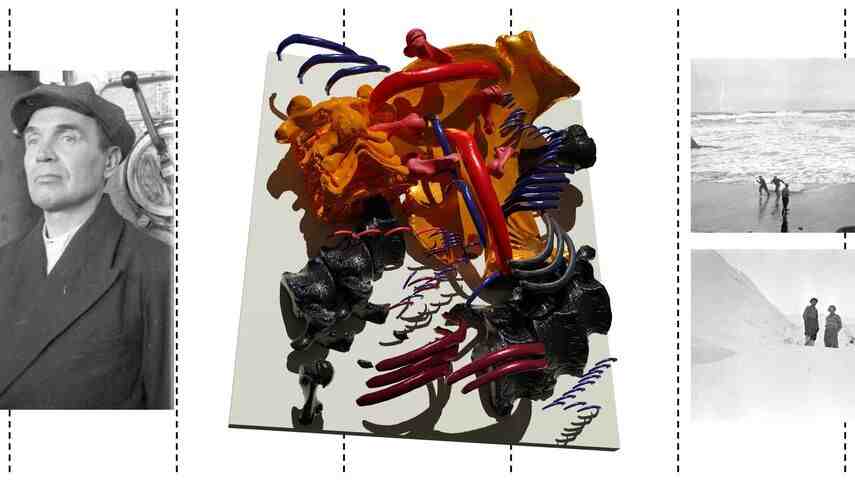The second “wave” of The Coastline Paradox exhibition raises questions about the consumption and removal of various resources, the consequences of these processes, and the possibility of sustainable development.
Remove Not Keep
- Date:
- 15 Oct–
4 Nov 2024
- Age restrictions
- 6+
Ever since it was first discovered, Kamchatka has been widely regarded as a treasure trove of resources. The days of the fur trade are over, but fishing continues, while scientific progress has led to the production of new resources such as geothermal energy, and in the future possibly lithium as well. This section of the exhibition suggests that we take a broader view of removal, and add experiences, cultural items, and human power to the list of resources.

Visitors take away photographs of local beauty, which in turn attract new travellers. The Itelmen, one of the peninsula’s indigenous peoples, dance to exhaustion at the Alhalalalai festival. In the Soviet period, this holiday was forgotten, and it was not revived until the late 1980s, returning to the cultural field of Kamchatka to become not just an authentic practice, but also a tourist attraction, another experience that can be taken away. Museums in big cities have been adding cultural objects taken from Kamchatka to their collections for centuries. Is it possible to change our perspective and look at the region through the prism of environmentalism and sustainable development?
Most of the exhibits on display come from the museums of Russia, mainly from Moscow and Saint Petersburg. The export of cultural values and human images is a type of removal that is noticeable even to the untrained viewer: in large cities, ethnographic expositions, torn out of their local context, are perceived as a “collection of curiosities.” Thus, the portraits of the peninsula’s indigenous inhabitants made by ethnographer Vladimir Jochelson are placed in stands resembling devices for watching slideshows and viewing binoculars. Here, the logic of removal denies the observer direct and equal contact with the image. Recordings of performances by the Koryak dance ensemble Mengo illustrate how indigenous practices are incorporated in stage arts, blurring the boundary between authenticity and stylization. And the geological samples taken away from Kamchatka are an example of literal removal, which only can become an exchange in the long term.